Sheikh Mohammed bin Rashid Gardens: A Detailed Exploration
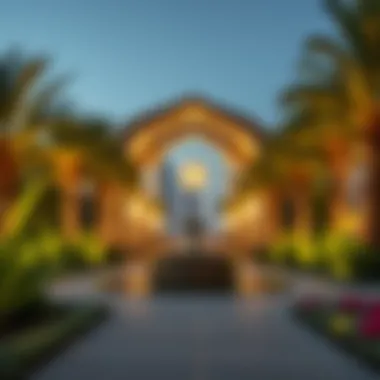
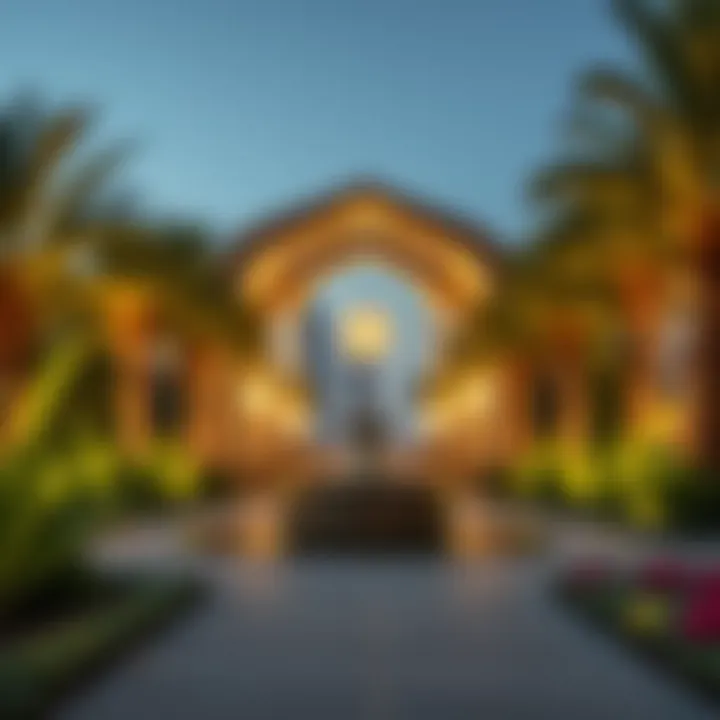
Intro
Sheikh Mohammed bin Rashid Gardens serve as a prime example of the thoughtful integration of nature into urban living within Dubai. This sprawling garden, named after the visionary Sheikh Mohammed bin Rashid Al Maktoum, beautifully captures the essence of the city’s rapid development while also highlighting the importance of green spaces in enhancing quality of life. Dedicated to showcasing the delicate balance between modern architecture and lush landscapes, the gardens have naturally become a focal point for both residents and visitors alike.
The gardens boast unique features that differentiate them from other recreational areas in Dubai, such as themed zones that reflect various aspects of the emirate's culture and heritage. They not only provide an oasis of tranquility amidst the concrete jungle but also carry significant cultural relevance, offering a venue for local events, exhibitions, and gatherings. As urban planners emphasize sustainability, Sheikh Mohammed bin Rashid Gardens demonstrates eco-friendly principles, embracing innovative design while minimizing their environmental footprint.
In this article, we will delve deeply into the various elements that make these gardens an essential asset to Dubai's landscape. We will discuss the current market trends related to property prices in the vicinity, explore investment opportunities available, and analyze how these gardens complement residential living, which may attract potential buyers and investors to the area.
Intro to Sheikh Mohammed bin Rashid Gardens
Sheikh Mohammed bin Rashid Gardens stands as a remarkable testament to the vision of modern Dubai, marrying aesthetic beauty with environmental consciousness. It’s not just a patch of greenery; it’s a canvas of cultural expression and urban vitality. These gardens serve as a vital link between the natural and the man-made, reflecting the aspirations of a city that constantly seeks to redefine itself.
When one thinks of Dubai, glistening skyscrapers and bustling markets come to mind. Nestled amidst this urban sprawl, the gardens are pivotal for several reasons. For investors and real estate agents, they symbolize a significant enhancement to property values, transforming nearby locales into desirable residential areas. They provide a breathing space in the otherwise densely populated neighborhoods, fostering a sense of community among residents and offering them an escape from the city's fast pace.
Benefits of Sheikh Mohammed bin Rashid Gardens:
- Aesthetic Appeal: The gardens add lush greenery to the landscape, promoting a charming environment that attracts visitors and potential homeowners alike.
- Environmental Impact: Incorporating sustainable practices, these gardens pave the way for ecological awareness within a rapidly developing city.
- Social Gatherings: They offer spaces for community events, strengthening social ties and enhancing the quality of life for Dubai’s residents.
In terms of considerations, one cannot overlook the challenges faced in maintaining such expansive green areas. Regular upkeep and the delicate balance of preserving native flora while cultivating new varieties is crucial. For expatriates looking to immerse themselves in local culture or for analysts assessing economic growth, these gardens provide a fascinating focal point.
"Dubai's identity isn’t only defined by its commercial prowess but also by its ability to integrate nature within its urban landscape."
As we delve deeper into the specific aspects of the Sheikh Mohammed bin Rashid Gardens, we uncover layers of historical relevance, design philosophy, and cultural significance that not only enrich Dubai’s mosaic but also beckon the interest of potential investors.
Historical Background
Understanding the historical background of Sheikh Mohammed bin Rashid Gardens is crucial for grasping their significance in the context of Dubai’s urban landscape. These gardens do not merely serve as green spaces; they embody the vision, aspirations, and socio-cultural evolution of a rapidly changing city.
The Vision behind the Gardens
The inception of Sheikh Mohammed bin Rashid Gardens stems from a broader vision of enhancing urban livability and environmental sustainability. Sheikh Mohammed bin Rashid Al Maktoum, Vice President and Prime Minister of the UAE, aimed to create a haven where nature and community would intertwine harmoniously. This vision reflects not only a commitment to aesthetic beauty but also to fostering a sense of belonging among residents and visitors alike.
The gardens are designed to serve multiple purposes. They act as recreational spaces, gathering spots for families, and venues for cultural events, all while maintaining ecological integrity. The underlying philosophy here is that urban life should not come at the cost of nature but instead should complement and elevate it. The gardens symbolize this philosophy quite literally, presenting a lush counterpoint to the city's towering skyscrapers.
Some key elements of this vision include:
- Ecological Awareness: An emphasis on preserving local biodiversity and promoting awareness about sustainable practices.
- Community Engagement: Spaces designed for communal activities, events, and celebrations that draw people together.
- Cultural Identity: A reflection of the UAE’s rich heritage, seamlessly blending traditional landscaping with contemporary design.
Milestones in Development
The journey of Sheikh Mohammed bin Rashid Gardens is punctuated by several milestones that have contributed to their evolution into a pivotal part of Dubai’s urban tapestry. Initiatives began with site selection and planning phases, involving meticulous design choices that took into account the local climate and native flora.
a. Planning and Design Phase
This phase was crucial in shaping the gardens. Experts collaborated to create designs that would not only withstand Dubai's arid conditions but also thrive in them. Focus was placed on integrating local plants to reduce water reliance and maintenance costs, which are essential in a desert climate.
b. Construction and Installation
The actual construction saw the development of pathways, water features, and recreational areas, which all aimed at maximizing the user experience. It’s worth noting that modern engineering techniques were also employed to ensure durability and sustainability.
c. Inauguration and Public Access
The gardens were officially opened to the public, marking an important day for Dubai. Their unveiling invited not just residents, but tourists and expatriates seeking a slice of greenery amidst the urban setting. Public interest surged, and so began regular events and activities, further embedding the gardens into the social fabric of the city.
In summary, the historical context of Sheikh Mohammed bin Rashid Gardens reveals much about the values and vision of Dubai. Their growth resonates with the city's evolution in sustaining a balance between natural beauty and urban sophistication. For further insights into the significance of such developments, visit Wikipedia for a broader perspective on similar urban gardening projects.
Design and Architecture
The integration of design and architecture in Sheikh Mohammed bin Rashid Gardens underscores not only the aesthetic values but also the practical functionality these spaces provide for the community. Good design goes beyond mere beauty; it shapes the way people engage with their environment. The gardens exhibit a harmonious relationship between nature and human intervention, emphasizing ecological balance while offering a respite from the bustling urban life surrounding Dubai.
Landscape Architecture Principles
At the heart of Sheikh Mohammed bin Rashid Gardens lies a robust application of landscape architecture principles. Designers crafted the spaces to resonate with the local climate and cultural ethos, creating areas that feel intuitive and approachable. Here, key principles include:
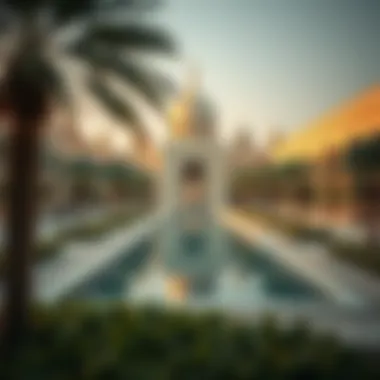
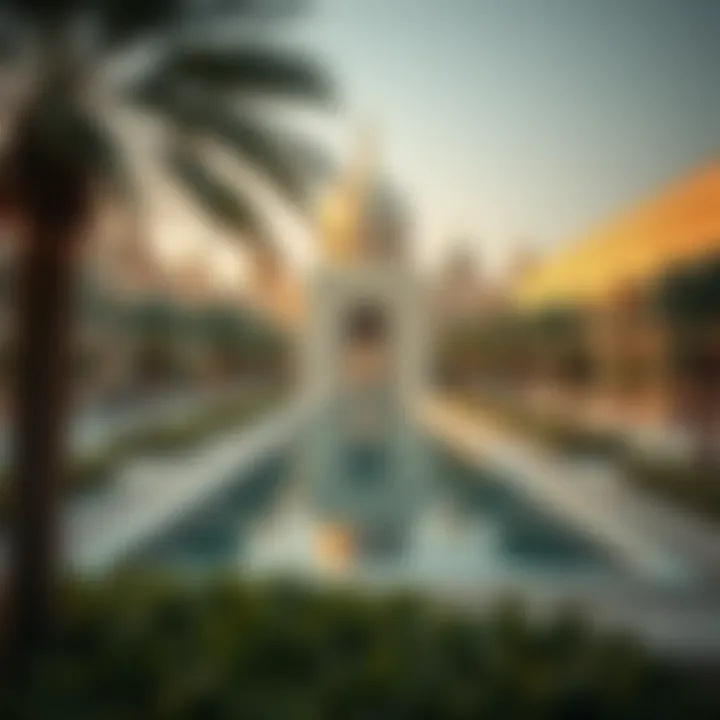
- Sustainability: The gardens demonstrate a commitment to ecological preservation, minimizing resource consumption while maximizing enjoyment. Using native plants reduces water needs and promotes biodiversity.
- User-Centred Design: Pathways are constructed to encourage leisurely strolls and interactive experiences. This makes the area inviting, not just for residents but also for tourists and families seeking recreational activities.
- Spatial Dynamics: The layout of the gardens utilizes both horizontal and vertical dimensions to stimulate sensory experiences, providing a visual balance that enhances the overall visitor journey.
These principles craft a landscape that is not just visually captivating but also practical, making it an essential model for future urban projects.
Use of Native Flora
Focusing on the use of native flora serves multiple purposes in the gardens. Opting for plants that are indigenous to the region means they are well-suited to the local soil and climate, thereby requiring less water and maintenance compared to non-native species. This approach supports the overarching environmental goals, promoting a resilient ecosystem.
- Biodiversity Enhancement: By incorporating various native species, the gardens create habitats that support local wildlife, helping maintain the ecological balance.
- Cultural Relevance: Native plants often carry historical and cultural significance, connecting the gardens to the heritage of Dubai, thereby enriching the visitor's experience.
- Aesthetic Appeal: The visual variety offered by native flora, with its unique colors and textures, ensures that the gardens offer a dynamic experience throughout the seasons.
"The reflection of local culture through thoughtfully chosen plants reinforces a sense of identity within the urban landscape."
In summary, the design and architecture of Sheikh Mohammed bin Rashid Gardens are pivotal in creating a meaningful and sustainable space. The expert use of landscape architecture principles and native flora not only enhances the visual landscape but also champions environmental stewardship, cultivating a rich sense of community for its visitors.
Cultural Significance
The cultural significance of Sheikh Mohammed bin Rashid Gardens cannot be overstated. These gardens serve not just as a lush retreat within the urban landscape of Dubai but also as a symbol of the city's dedication to creating attractive, functional green spaces. They stand as a testament to the vision of Sheikh Mohammed bin Rashid Al Maktoum, emphasizing harmony between nature and urban development, which resonates deeply with both residents and visitors alike.
Gardens as a Community Space
When one thinks of community spaces, parks and gardens often come to mind. Sheikh Mohammed bin Rashid Gardens excel in fulfilling this role. The careful planning and thoughtful layout offer an inviting atmosphere for people of all ages. Families flock here on weekends, where children can roam freely among the flowerbeds and enjoy designated play areas. Moreover, the gardens often host community events, including festivals and workshops, which further foster a sense of belonging among residents.
Engaging in communal activities helps bridge gaps between various cultural backgrounds. Residents from different walks of life get to interact, share experiences, and celebrate diversity in a comfortable setting. The gardens thus offer not just a physical space but also a vital social platform where relationships can blossom.
"These gardens are more than just flora and pathways; they are a living, breathing part of the community, where friendships are forged and memories are created."
Art and Landscaping Integration
Art and landscaping are intertwined in Sheikh Mohammed bin Rashid Gardens. The design reflects artistic intent, incorporating natural elements with creative flair. Sculptures, fountains, and murals are dotted throughout the gardens, inviting reflection and appreciation of artistic expression. This artistic integration sparks curiosity and engages visitors in what could be seen as a walking gallery.
The use of local artists to create installations further emphasizes the cultural relevance of the gardens. By showcasing the talents of homegrown creators, the gardens not only beautify the space but also support the local arts community. This relationship highlights the importance of cultural expression and serves as a reminder of the rich traditions that form the backdrop of the UAE's identity.
In summary, the cultural significance of Sheikh Mohammed bin Rashid Gardens goes beyond aesthetics; it nurtures community bonds and elevates local artistry, thus enriching Dubai's vibrant urban landscape. The gardens stand as a model for how green spaces can contribute to a city's cultural fabric, allowing for growth, interaction, and expression.
Environmental Impact
The Sheikh Mohammed bin Rashid Gardens play a pivotal role in enhancing the ecological balance within Dubai's urban environment. As urban spaces expand, the necessity for greenery becomes undeniable. These gardens not only provide a tranquil retreat for residents and visitors alike but also act as critical components in supporting biodiversity and fostering a sustainable urban ecosystem.
Sustainability Initiatives
One of the standout features of the Sheikh Mohammed bin Rashid Gardens is their commitment to sustainability. The gardens have embraced several initiatives to ensure that they contribute positively to the environment, rather than detract from it. Efforts include:
- Water Conservation Practices: The gardens employ advanced irrigation systems that minimize water wastage. These systems utilize recycled water, reflecting a responsible approach towards natural resource management.
- Use of Renewable Energy: Solar panels are integrated throughout various sections, powering lighting and amenities. This not only reduces dependency on conventional energy sources but also demonstrates a commitment towards alternative energy solutions.
- Waste Management Strategies: Comprehensive recycling programs are in place, aiming to repurpose waste generated from both maintenance and visitor activities. Organic waste is composted and used within the gardens, promoting a closed-loop system.
Each of these initiatives showcases a deliberate effort to harmonize human activity with ecological support, making these gardens a model for urban sustainability in the region.
Biodiversity and Ecosystem Support
Incorporating a variety of plant species, the gardens are not merely a visual appeal but a bastion of biodiversity. This integration of diverse flora supports various ecosystems, ensuring that both local wildlife and plant species can thrive. Some specific elements that highlight this are:
- Habitat Creation: The gardens serve as a sanctuary for various birds and insects, providing them a habitat amid the urban landscape. This biodiversity adds resilience to the ecosystem, making it adaptable to environmental challenges.
- Native Plant Usage: By focusing on native plants, the gardens foster growth that does not require excessive resources, such as fertilizers or pesticides. This practice encourages sustainable horticulture and promotes the indigenous ecological fabric of the region.
- Educational Engagement: Through various programs, the gardens emphasize the importance of biodiversity. Visitors can learn about the role these plants and animals play in their environment, making it an educational hotspot for schools and community groups.
"The preservation of biodiversity is not just about protecting species but about maintaining the delicate balance of our ecosystem."
In this vein, the Sheikh Mohammed bin Rashid Gardens stand as a testament to the notion that urban developments can work in harmony with nature, offering a rich tapestry of life amid concrete jungles. They serve as a source of inspiration for future developments within the region, encouraging all investors and stakeholders to consider environmental impacts in their projects.
Community Engagement
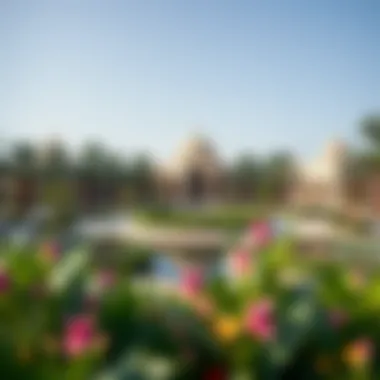
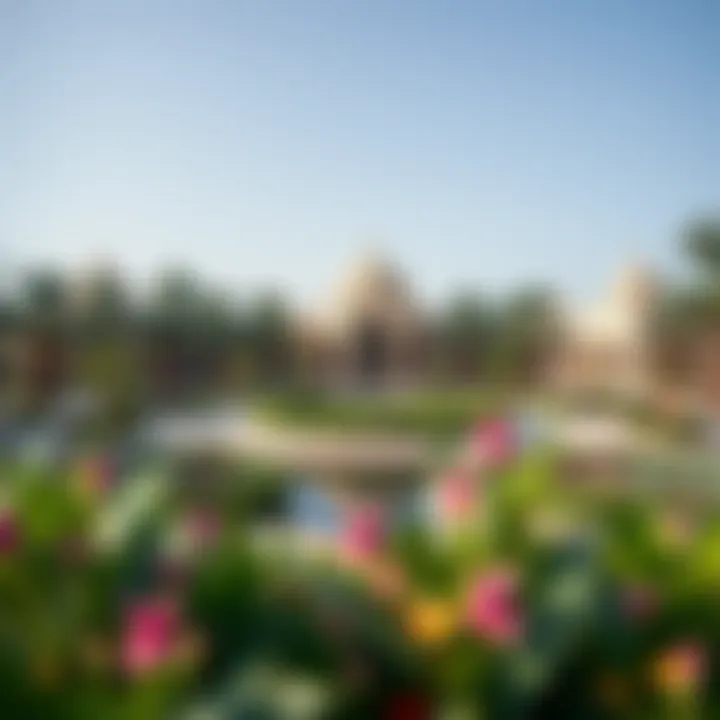
Community engagement serves as a cornerstone of the Sheikh Mohammed bin Rashid Gardens, infusing life into the spaces beyond their beautiful vistas and landscaped pathways. At its core, the gardens are not just a feast for the eyes, but a gathering ground where residents and visitors merge talents, ideas, and cultures. This engagement fosters a sense of belonging and alignment among diverse communities, making these gardens a vital part of Dubai's urban fabric.
The impact of community engagement in these gardens expands beyond aesthetics; it includes social, economic, and educational dimensions. Activities and events organized here pull in crowds from all walks of life, allowing individuals to immerse themselves into the local culture and create lasting memories. The gardens act as a melting pot, bringing people together, nurturing relationships, and fostering camaraderie.
This community-focused approach provides benefits such as:
- Stronger Social Bonds: When people come together for events, it enhances social networks, making neighborhoods feel more connected and vibrant.
- Increased Awareness: Activities at the gardens stir interest in local flora and fauna, helping to educate the public about sustainability and conservation.
- Economic Boosts: Local businesses often benefit from increased foot traffic during community events, giving them a platform for visibility and growth.
- Educational Opportunities: Programs designed within the gardens may include hands-on workshops or guided nature walks, enhancing the knowledge and appreciation of the environment among all age groups.
Overall, nurturing relationships within the community emerges as a priority, striving for collaborative efforts that resonate with authenticity. Under this umbrella, the gardens become more than just a serene escape; they transform into an integral part of the social landscape.
Events and Activities
The dynamic nature of Sheikh Mohammed bin Rashid Gardens is highlighted through a range of engaging events and activities. These events serve to captivate the community and encourage participation, making everyone feel included. With activities like outdoor concerts, seasonal festivals, art shows, and farmers’ markets, there is always something happening within these lush confines.
- Seasonal Festivals: These attract families and visitors around major holidays. For instance, during Eid, the gardens showcase traditional performances, local crafts, and diverse culinary experiences.
- Outdoor Concerts: Bringing in local talent and international artists creates an ambiance that resonates with music lovers. The gardens provide a scenic backdrop for these collective experiences.
- Art Installations: The integration of art within the space elevates the aesthetic experience. Many local artists display their work amidst the natural beauty, which often sparks conversations and reflects community identities.
The variety of events contributes significantly to the gardens' role as a community hub, making them a focal point for entertainment and education throughout the year.
Educational Programs
Educational programs within Sheikh Mohammed bin Rashid Gardens offer invaluable opportunities for learning and connection with the natural world. These programs are tailored for various age groups, focusing on topics related to ecology, conservation, and horticulture. They create a space for curiosity, where participants can delve deeper into environmental issues and sustainable practices.
Programs often include:
- Workshops on Organic Gardening: Attendees learn hands-on techniques to grow their own food sustainably while promoting awareness about environmental responsibility.
- Guided Nature Walks: These are led by ecologists and local experts who discuss local ecosystems and teach about native plants and wildlife.
- School Programs: Collaborating with local schools, special educational tours are arranged that align with curricular goals, promoting a connection to nature among younger generations.
Engaging the community through educational initiatives not only cultivates appreciation for the gardens but also encourages individuals to take action in protecting and cherishing their environments.
"Education is the best weapon for changing the world," a saying echoes the core belief that these programs strive to instill.
By intertwining events and educational experiences, Sheikh Mohammed bin Rashid Gardens secure their position as a significant community resource, fostering growth, understanding, and inclusivity in the heart of Dubai.
Real Estate Synergy
The relationship between the Sheikh Mohammed bin Rashid Gardens and nearby real estate cannot be overstated. When discussing urban development in Dubai, it’s crucial to consider how such gardens serve as catalysts for property value increases and investment potential. These gardens not only enhance the aesthetic appeal of their surroundings but also contribute to a holistic living environment that attracts home buyers and investors alike.
Influence on Nearby Property Values
The presence of Sheikh Mohammed bin Rashid Gardens undoubtedly plays a pivotal role in influencing property values in surrounding areas. Properties adjacent to green spaces typically see a price boost. This phenomenon is noticeable for several reasons:
- Desirability: Homes near well-designed parks or gardens tend to be more sought after, causing demand—and subsequently, prices—to rise.
- Quality of Life: The gardens offer a peaceful escape from urban life, promoting a sense of community. Potential buyers often prioritize such amenities when making their housing choices.
- Long-term Appreciation: As the gardens mature and the surrounding areas develop further, property values tend to appreciate steadily over time.
Therefore, those investing in real estate close to these gardens can expect favorable returns, driven largely by their intrinsic and extrinsic appeal.
Investment Potential in Surrounding Areas
When examining investment opportunities, the role of Sheikh Mohammed bin Rashid Gardens becomes even more fascinating. These gardens create a ripple effect that stimulates the local economy and enhances investment attractiveness. Here are some key considerations:
- Increased Foot Traffic: Gardens draw visitors not only from the immediate vicinity but from across the city. This influx can benefit local businesses, enticing residential developments close by, which investors find attractive.
- Infrastructure Development: With increased demand from potential buyers, local governments are likely to enhance infrastructure. Roads, public transport, and utilities often see improvements, which can further elevate property desirability.
- Community-Centric Development: The gardens encourage the growth of community-centered projects, such as cafes and recreational facilities, which contribute positively to real estate dynamics.
In summary, the synergy between Sheikh Mohammed bin Rashid Gardens and the real estate market is a prime example of how thoughtful urban planning can stir economic growth and improve living conditions. For investors, positions near lush, well-maintained green spaces yield not just immediate benefits but promising long-term returns as well.
Visitor Experience
The concept of visitor experience is crucial when discussing the Sheikh Mohammed bin Rashid Gardens. This space is more than just a green area in Dubai; it's a multi-sensory environment designed to evoke emotions and foster connections among its visitors. The gardens serve as a testament to thoughtful urban design that prioritizes not only aesthetics but also the comfort and enjoyment of its users.
One of the primary elements that enhance the visitor experience is the seamless accessibility to the gardens. People from different walks of life can engage with this space. Facilities such as ample parking, wheelchair ramps, and well-marked pathways ensure that everyone feels welcome. Additionally, the proximity to major public transport routes allows for easy access, making it a convenient location for both residents and tourists.
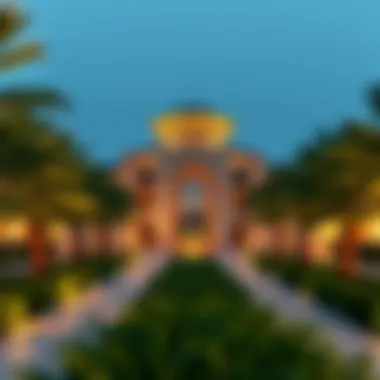
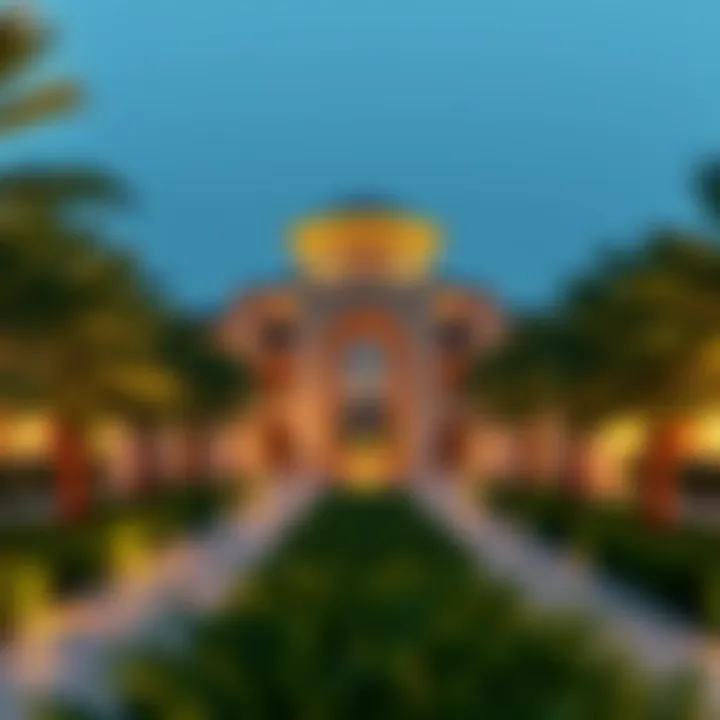
Accessibility and Amenities
The gardens boast various amenities that are tailored to accommodate the needs of visitors. Rest areas, equipped with benches and picnic spots, invite guests to relax amidst the greenery. Clean and well-maintained restroom facilities enhance overall comfort, ensuring that guests can make the most of their visit.
- Smart pathways: Rugged yet elegant pathways interweave through the site, allowing visitors to explore the gardens without much ado.
- Play areas for children: Designated spaces offer a safe environment for children to play, ensuring that families find enjoyment during their time at the gardens.
- Environmental signage: Information boards throughout the area educate visitors on the various plants present, enriching their understanding of Dubai's unique biodiversity.
Beyond these aspects, the incorporation of refreshment facilities keeps visitors energized. Coffee shops and kiosks provide quick bites and refreshments without needing to leave the premises, further enhancing the overall experience.
Guided Tours and Exploration
The opportunity for guided tours adds a significant layer to the visitor experience. These tours are designed to capture the essence of the gardens through a narrative lens, all while offering insights into the design principles and cultural significance that shape this green space. Visitors can engage with knowledgeable guides who share stories about the flora, fauna, and architectural highlights of the gardens.
- Expert commentary: Guides provide valuable context that invites visitors to look beyond the surface, encouraging deeper appreciation for the gardens.
- Thematic tours: Special focus tours, such as photography walks or nature trails, cater to specific interests, allowing guests to explore at their own pace.
- Interactive experiences: Certain tours may incorporate hands-on elements, from gardening workshops to art installations, making for a dynamic visit.
Overall, the combination of accessibility, amenities, and guided exploration elevates the visitor experience at Sheikh Mohammed bin Rashid Gardens. It reinforces the gardens' role as a key component of urban life in Dubai, reflecting the city's commitment to creating spaces that promote well-being and foster community connections.
Challenges and Future Developments
In the context of Sheikh Mohammed bin Rashid Gardens, understanding the challenges ahead and potential future developments is paramount for stakeholders and community members alike. These gardens are not merely a spot of greenery; they embody a broader vision for urban living in Dubai. Recognizing ongoing hurdles as well as paths forward illuminates insight into the sustainability and vibrancy of this oasis amidst the bustling city.
Ongoing Maintenance Issues
Maintenance is a vital cog in the wheel of any public green space. Sheikh Mohammed bin Rashid Gardens, featuring exotic plant species and intricate landscapes, faces its share of maintenance challenges. The arid climate of Dubai poses unique threats to biodiversity, making it essential to ensure that the plants are adapted well and receive proper care. Here are key aspects regarding ongoing maintenance issues:
- Water Conservation: Given the limited water resources, irrigation is critical. Implementing efficient systems such as drip irrigation can help conserve water while keeping the gardens lush.
- Soil Health: The soil quality in many areas can deteriorate over time, affecting plant growth. Regularly testing and amending habitats with organic matter or native soil can help maintain the health of the gardens.
- Invasive Species Management: Uninvited species can disrupt the local ecosystem and hamper the gardens' aesthetics. Continuous monitoring and swift removal of these plants are necessary to protect native flora.
- Visitor Impact: A busy garden is a sign of success, but it can also lead to wear and tear. Installing paths and designated areas can mitigate damage to sensitive environments.
Community engagement in maintenance is also pivotal. Involving local residents through volunteer programs can create a sense of ownership towards the gardens, encouraging them to take pride in maintaining their space.
Plans for Expansion
To keep pace with Dubai's rapid urban development, there are plans for the expansion of Sheikh Mohammed bin Rashid Gardens. This expansion is not only about increasing size but rather enhancing the experience:
- Incorporating New Features: Future developments might include themed gardens focusing on various aspects of Emirati heritage and culture, making the gardens not just a visual delight but an educational resource.
- Enhanced Accessibility: Plans are underway to improve access points and connectivity to nearby residential and commercial areas. This careful integration could make the gardens a part of daily urban life for more people.
- Environmental Hubs: Incorporating more environmental education facilities can serve as platforms for workshops and seminars on sustainable landscaping and ecology, fostering a community ethos towards nature.
- Technology Integration: Utilizing smart garden solutions could provide real-time data on plant health and visitor numbers. This could help in maintaining the gardens more effectively and improving visitor experience.
A well-planned expansion not only represents growth but captures the essence of Dubai's commitment to enhancing urban green space. As Sheikh Mohammed bin Rashid Gardens evolves, it faces the challenge of adapting to the needs of its visitors while staying true to its original vision.
"The future belongs to those who believe in the beauty of their dreams." – Eleanor Roosevelt
As we move forward, continuous dialogue between city planners, environmentalists, and the community is fundamental in ensuring that the gardens thrive not just as land, but as a beloved cornerstone of Dubai's urban landscape.
For more insights on urban environmental planning, consider visiting World Bank or United Nations Environment Programme.
Whether you are an investor, expatriate, or simply a nature enthusiast, the future developments of Sheikh Mohammed bin Rashid Gardens are poised to offer exciting new opportunities and experiences.
End
In considering the Sheikh Mohammed bin Rashid Gardens, one cannot overlook their profound significance within the tapestry of Dubai’s urban landscape. These gardens are not just patches of greenery; they embody the meticulous planning and vision of a city that seeks to blend nature harmoniously with modern life. For investors, real estate agents, expatriates, and prospective buyers, the understanding of these gardens is instrumental—there are several reasons for this.
Firstly, the gardens serve as a beacon of sustainability. They illustrate how urban spaces can be designed to support biodiversity and evoke ecological consciousness. The initiatives undertaken here aren’t mere trends; they are essential components in setting a precedent for future developments in Dubai. The emphasis on sustainability attracts environmentally-minded residents and investors, creating a unique market for eco-friendly living.
Furthermore, the garden's role as a communal space cannot be overstated. It has become a gathering place for families and individuals alike, fostering community spirit and social interaction. Investors must recognize the value that local amenities bring to property markets; a well-maintained green space can significantly uplift property values and enhance the appeal to potential buyers. For expatriates, these gardens offer a sanctuary, a place to connect with nature amidst the hustle and bustle of city life.
Investment potential is directly tied to the desirability of locations. The strategic placement of Sheikh Mohammed bin Rashid Gardens adjacent to residential and commercial areas undoubtedly enhances the attractiveness of nearby properties. Potential buyers are likely drawn to developments that boast proximity to such significant green spaces, enabling a serene lifestyle while enjoying the perks of urban living.
Ultimately, as one reflects on the comprehensive overview of these gardens, it becomes clear that they are not merely an aesthetic feature of Dubai. They represent a commitment to a sustainable and vibrant urban ecosystem, proving that the future of city living can be rooted in nature. For those invested in Dubai's evolving real estate landscape, understanding the implications of these gardens is paramount—it’s about recognizing that quality of life and environmental stewardship go hand in hand in this part of the world.
The Sheikh Mohammed bin Rashid Gardens are more than just beauty; they are the heartbeat of a sustainable future, a vital consideration for anyone in the property market.
As urban development continues, one can only hope that such initiatives inspire similar projects across the globe. The insights gained from the evolution of these gardens will serve as a guiding light for sustainable urban living, setting a benchmark for cities worldwide.
Further Reading
- Learn more about sustainable urban design at en.wikipedia.org.
- Explore the impact of green spaces on real estate values at britannica.com.
- For community engagement initiatives, check discussions on reddit.com.
- For urban development resources, refer to government publications at *.gov or educational resources at *.edu.



